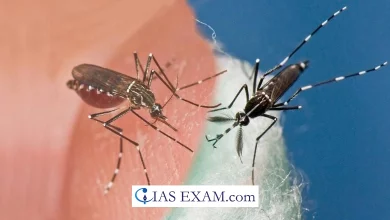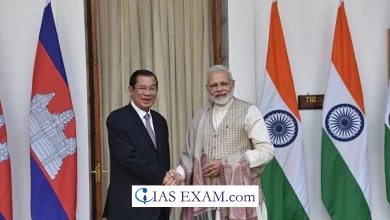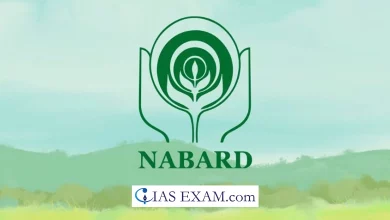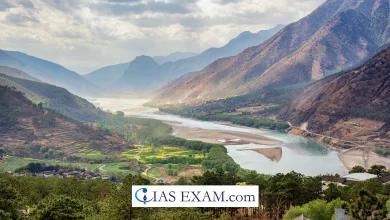Daily Current Affairs for UPSC
Project 39A Report on Death Penalty
Syllabus-Government Policies and Interventions [GS Paper-2]
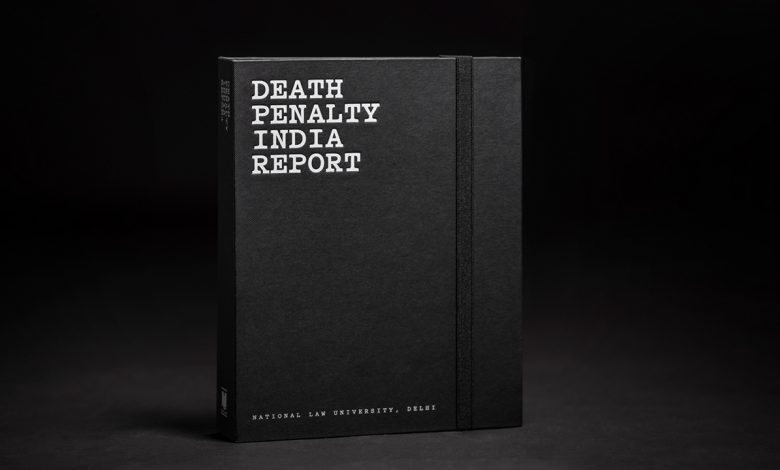
Context– Recently, a criminal reforms advocacy group with the National Law University, Delhi has released a report on the death penalty in India.
Key Points
- The Supreme Court of India has initiated a review of the process for awarding death penalty while expressing concern over the manner by which trial courts and High Courts carry out sentencing with little relevant information.
- Despite the large number of death sentences in trial courts, very few death sentences are upheld by higher courts.
- The 1980 framework in Bachan Singh’s case outlines the guidelines for judges to choose between life imprisonment and death penalty, considering both the crime and the accused, with life imprisonment as default.
- However, there has been widespread concern that imposition of death sentences has been arbitrary, inconsistent and also crime-cantered.
- The Supreme Court aims to rectify errors and ensure comprehensive sentencing information for judges in death penalty cases.
Major findings of the Report:
- With 165 death sentences at the end of 2022, this is the highest number of death sentences imposed in a year in over two decades (since 2000).
- This shift has been sharply influenced by the extraordinary sentencing of 38 persons to death in Ahmedabad in a single bomb blast case, which represents the largest number of persons sentenced to death in a single case since 2016.
- Around 98.3% of the death penalty cases were decided by trial courts without any materials on mitigating circumstances of the accused and without any state-led evidence on the question of reform.
- There are 539 prisoners on death row, a 40% rise since 2015 owing to an increased number of death sentences imposed by trial courts with fewer cases being heard on appeal by higher courts.
- In the past one-year, High Courts across India decided 68 matters, whereas the Supreme Court decided 11 matters.
- Of the 68 cases decided by the high courts, only four death sentences were confirmed, while 40 accused in 19 cases were acquitted, 51 accused in 39 cases were handed reduced sentences, and six cases were referred back to trial courts.
- Even when death sentences are commuted, they have largely resulted in the imposition of life imprisonment without remission.
- Placing convict sentences beyond the scope of executive remission puts concerns with the focus of the prison system on reformation and rehabilitation.
- Matters of sexual violence continue to dominate the imposition of death penalty, with such cases constituting over half of the total death sentences imposed by trial courts in 2022.
- Most death row prisoners are economically vulnerable and also have poor legal representation leading to a lack of mitigation information.
- Judges most of the time dismiss mitigating factors and there is no real guidance on assigning weight to aggravating and mitigating factors i.e., individual’s circumstances of the accused taken into account in determining punishment.
A criminal trial has two main stages:
- Guilt stage: Hence, anything presented or said during sentencing cannot be used to reverse or change the finding of guilt.
- Sentencing stage: It mainly happens after the accused has been found guilty of the crime and this is the stage where punishment is determined.
Major laws governing Death Penalty:
- Indian Penal Code (IPC): IPC imposes death penalty for offenses such as murder, treason, and kidnapping for ransom.
- Code of Criminal Procedure (CrPC): CrPC provides the legal procedures for imposing the death penalty.
- Protection of Children from Sexual Offences (POCSO) Act: It also imposes death penalty for aggravated sexual assault against children.
- Narcotic Drugs and Psychotropic Substances (NDPS) Act: It imposes the death penalty for drug trafficking.
- Indian Evidence Act: It regulates the admissibility of evidence in death penalty cases.
- Constitution of India: Guarantees the right to a fair trial and the protection against cruel and unusual punishment.
Court Judgements:
- Rare of the rarest: Supreme Court has set guidelines for the imposition of the death penalty, including the “rarest of rare” principle, which states that the death penalty should only be imposed in exceptional circumstances where the crime is of an extremely heinous nature.
- Establishing framework: In the Bachan Singh’s case of 1980, the Supreme Court upheld the constitutional validity of the death penalty and a framework was developed for future judges to also follow when they had to choose between life imprisonment and the death penalty.
- Collecting Information: In the judgments in Santa Singh (1976) and Mohd Mannan (2019) case, the SC has recognised the interdisciplinary nature of such an exercise, and it requires professionals other than lawyers to collect such information.
Death Penalty in India:
- The death penalty has been used in India for a long period as a form of punishment for crimes ranging from murder to treason.
- The Indian Penal Code of 1860 made the death penalty as the maximum punishment for certain offences.
- The use of the death penalty was limited in the country during the British colonial period and was only used in the rarest of rare cases.
- India continued to use the death penalty after independence, with the power to impose it given to the courts.
- The Supreme Court has upheld the constitutionality of the death penalty but has limited its use to the rarest of rare cases.
- There have been calls to abolish the death penalty in India because of concerns about the possibility of executing innocent people, flaws in the criminal justice system, and a lack of evidence that it serves as a deterrent to crime.
Way Ahead
- The pathways towards modifying the death penalty and towards its abolition go side by side for a long distance.
- Each discussion about death sentence reform highlights the inherent injustice of the practice, particularly in a society like ours.





.png)
